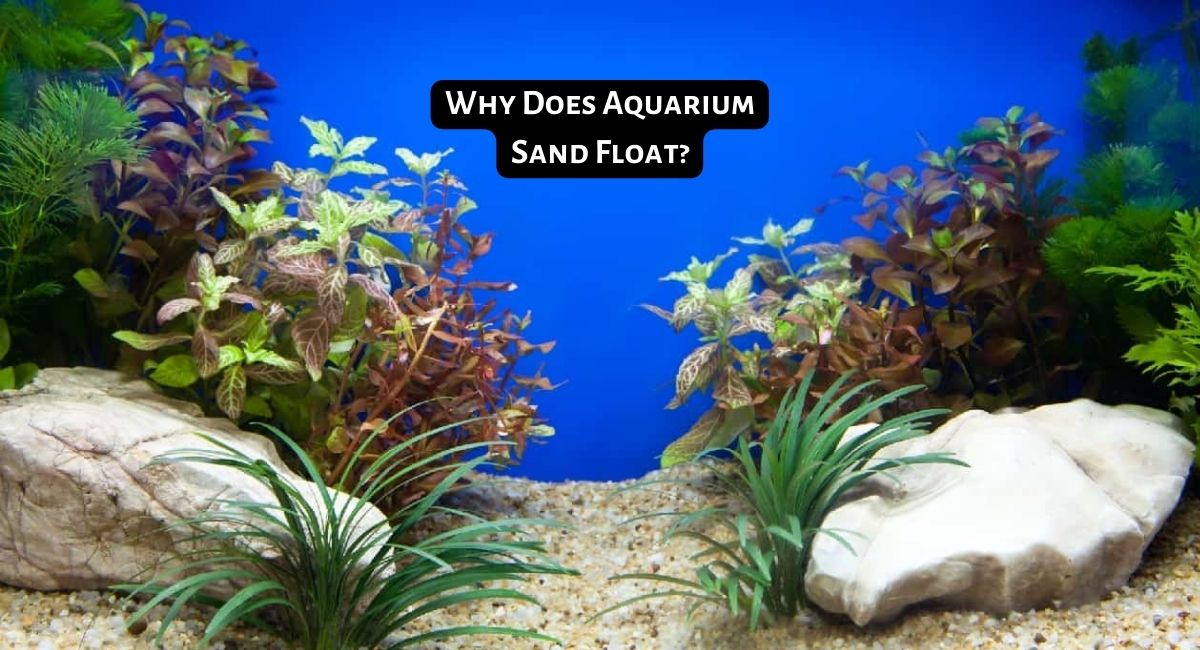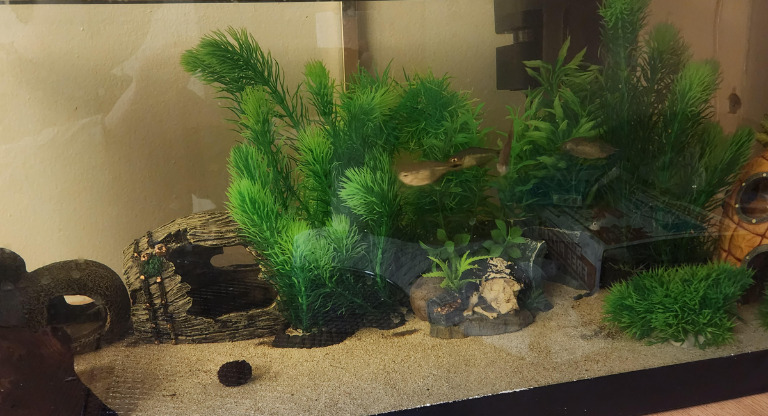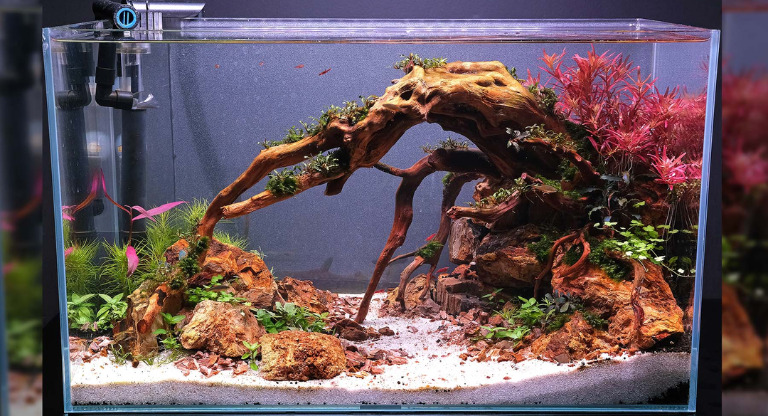Smartplantedaquarium.com participates in affiliate marketing programs. We may earn commissions on purchases made through our affiliate links. This doesn't affect our content or recommendations and we only recommend products we would put in our own tanks.
Have you ever wondered why aquarium sand seems to float when you add it to your tank? It’s a common question among aquarium enthusiasts. In this article, we’ll dive into the science behind this fascinating phenomenon. By understanding why aquarium sand behaves this way, you’ll be better equipped to create a stunning underwater environment for your aquatic friends. So, let’s explore the secrets of floating aquarium sand together.
Contents
Key Takeaways
- Aquarium sand can float due to tiny air bubbles trapped between the sand particles.
- Factors such as surface tension, type of sand, presence of organic compounds, and improper rinsing can also contribute to floating sand.
- To get rid of floating sand, it is important to thoroughly rinse the sand before adding it to the aquarium.
- The water displacement method, breaking the surface tension, using a fine mesh net, using a water clarifier, adjusting the filter, or waiting for the sand to settle naturally are effective methods to prevent floating sand.
- It is important to keep aquarium sand from floating to ensure the health of aquatic life, maintain water clarity, protect the filter, provide a stable environment for plants, prevent behavioral impact on fish, maintain aesthetic appeal, balance water chemistry, and avoid microbial imbalance.
Why Does Aquarium Sand Float
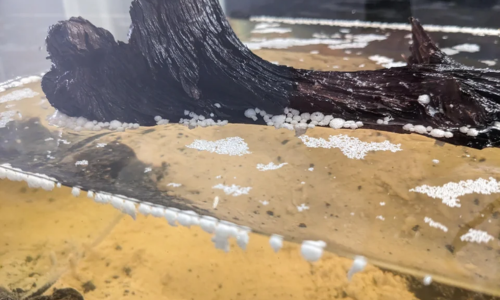
The most common reason sand floats when initially added to an aquarium is due to tiny air bubbles trapped between the sand particles. As sand is packed and stored, it can trap air. When introduced into the water, these air pockets cause the sand to be less dense than the water, allowing it to float. Over time, as the air bubbles escape, the sand will gradually sink to the bottom.
Other reasons why aquarium sand floats are enumerated below:
- Surface Tension: Water molecules are attracted to one another, creating a kind of “skin” on the water’s surface, known as surface tension. Fine particles of sand can be held up by this surface tension, especially if they are introduced gently or are dispersed on the water’s surface. This effect is temporary; once the surface tension is disrupted, the sand will sink.
- Type of Sand: Not all sands are created equal. Some sands, especially those that are lighter and finer, can float longer than others due to the factors mentioned above. Organic materials mixed with the sand, like bits of bark or leaves, can also cause portions of it to float.
- Presence of Organic Compounds: Sometimes, especially in brand new tanks, organic compounds can form a thin layer on the water’s surface, increasing the surface tension and allowing sand to float for longer periods.
- Improper Rinsing: Aquarium sand should be thoroughly rinsed before being added to the tank to remove dust and other fine particles. If not properly rinsed, the excess dust can create a cloudiness in the water and allow the sand to remain suspended for longer than usual.
How to Get Rid of Floating Sand in Aquarium
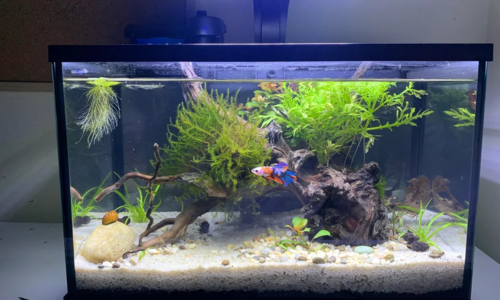
The best method to prevent sand from floating in an aquarium is to rinse it thoroughly before adding. Rinsing removes the fine dust and particles that are prone to suspension in water. It also helps in releasing trapped air between sand granules, which is a primary cause of sand floating. This method ensures that the bulk of the sand settles at the bottom of the tank immediately upon introduction, leading to a clear water column faster.
To properly rinse aquarium sand, begin by placing the sand into a clean bucket. Next, fill the bucket halfway with tap water. Using your hand, agitate and stir the sand thoroughly to ensure any trapped particles or air bubbles are released. After stirring, let the sand settle for a short while. You’ll notice the water becoming cloudy due to the fine particles in the sand.
Carefully pour off this cloudy water from the top, ensuring you don’t lose a significant amount of the sand in the process. This rinsing process should be repeated multiple times. Continue until, after stirring, the water in the bucket remains clear, indicating that the sand is adequately cleaned and free of fine particles.
Below are some more effective methods to help you get rid of floating sand in your aquarium:
Water Displacement Method: This method minimizes disturbance when adding sand to the aquarium. Fill a small container or cup with the pre-rinsed sand. Lower the container slowly into the aquarium, allowing it to fill with water. This gradual submersion prevents the sand from dispersing in the water column. Once the container is on the bottom of the tank, slowly pour out the sand. The sand will settle gently and disturb the water as little as possible.
Break the Surface Tension: After adding sand to the aquarium, you may notice some floating particles. To address this, use a net or your hand to gently agitate the water’s surface. This action disrupts the surface tension and helps any remaining floating sand particles sink. Alternatively, performing a gentle water change or adding water to the tank slowly can also help break the surface tension and encourage sand particles to settle.
Use a Fine Mesh Net: For larger sand particles that remain buoyant, use a fine mesh net to skim across the surface of the water. This will capture and remove floating sand particles effectively.
Use a Water Clarifier: If floating sand particles persist, you can consider using a commercial water clarifier. These products help particles in the water clump together, making them heavier and easier to filter out. However, ensure that the water clarifier is safe for your specific fish and plants by reading the product instructions and consulting with a knowledgeable source.
Adjust Your Filter: If your aquarium filter has a powerful current, it may keep sand particles suspended in the water. Consider redirecting the filter output or adjusting the flow rate to create a gentler flow. This change will allow the sand to settle more easily.
Review Sand Type: If you continue to face persistent issues with floating sand, it might be worth reevaluating the type of sand you’re using. Some sand varieties, particularly very fine or lightweight ones, are more prone to floating. Consider switching to a heavier aquarium-specific sand that is less likely to become buoyant.
Wait it Out: In many cases, patience is the key. Allow the aquarium to settle naturally. As trapped air bubbles between sand particles escape, the sand will gradually sink to the bottom. This process may take several hours to a couple of days.
Why is It Important to Keep Your Aquarium Sand From Floating
Aquarium sand serves multiple purposes, from aesthetic appeal to providing a natural substrate for aquatic plants and animals. Keeping the sand from floating is essential for several reasons:
- Aquatic Health: Floating sand particles can be ingested by fish, potentially leading to digestive issues. Moreover, these floating particles might clog the gills of some fish, causing respiratory distress.
- Maintaining Water Clarity: Suspended sand particles can cloud the water, reducing visibility and diminishing the aesthetic appeal of the aquarium. Cloudy water can also hinder the growth of aquatic plants by blocking light.
- Filter Functionality: Floating sand can be drawn into the aquarium’s filtration system. Over time, this can clog the filter, reducing its efficiency and possibly damaging it. This not only can lead to increased maintenance but also can reduce the overall lifespan of the filter.
- Stable Environment for Aquatic Plants: Plants rooted in the sand need a stable substrate to anchor their roots. If the sand is constantly being disturbed and floating, it can hinder the growth and health of these plants.
- Behavioral Impact on Fish: Some species of fish exhibit behaviors like burrowing or sifting through the sand in search of food. Floating sand can interfere with these natural behaviors, causing stress and disrupting the normal activities of the fish.
- Aesthetic Concerns: One of the primary reasons hobbyists choose sand is for its aesthetic appeal, emulating natural aquatic environments. Floating sand detracts from this natural look, diminishing the overall visual impact of the aquarium.
- Chemical Balance: Some sands, especially those designed for aquariums, can influence the pH and hardness of the water. If the sand is not settled properly, it might not effectively play its role in maintaining the desired water parameters.
- Avoiding Microbial Imbalance: A stable sand bed can host beneficial bacteria that play a role in breaking down waste and maintaining a healthy nitrogen cycle in the aquarium. Disrupted or floating sand can hinder the establishment of these beneficial microbial colonies.
From mysterious color changes to gas build-up concerns, our articles delve into the fascinating world of aquarium substrate issues. Explore solutions to keep your aquatic environment thriving and your tank substrate looking its best. Dive in and discover the answers to your substrate-related questions.
How to Reduce Anaerobic Gas Build Up in Aquarium Substrate: Learn effective strategies to prevent anaerobic gas build-up in your aquarium substrate, ensuring a healthier and safer environment for your aquatic pets. Discover expert tips to maintain optimal substrate conditions.
Why Does Aquarium Gravel and Sand Turn Green: Explore the causes of green discoloration in aquarium gravel and find practical solutions to combat this common issue. Maintain a vibrant and clear aquatic ecosystem with our expert insights.
Why Does Aquarium Gravel and Sand Turn Yellow: Discover the factors contributing to the yellowing of aquarium gravel and learn how to restore its natural appearance. Ensure your underwater world remains visually appealing with our helpful tips.
Why Does Aquarium Gravel and Sand Turn Black: Investigate the reasons behind the darkening of aquarium sand and how it affects your aquatic environment. Unlock strategies to prevent and manage black sand, ensuring a visually stunning aquarium.
Why Does Aquarium Gravel and Sand Turn Brown: Delve into the causes of brown discoloration in aquarium sand and uncover effective methods to maintain a clean and appealing substrate. Keep your underwater realm looking its best with our guidance.
How to Prevent Fish Tank Substrate from Compacting: Discover essential tips and techniques to prevent your aquarium substrate from compacting, ensuring a healthy and thriving aquatic environment for your underwater companions. Learn how to maintain optimal conditions for your aquatic ecosystem.
Conclusion
Aquarium sand may float for various reasons, but the primary factors include the size and density of the sand particles, as well as the presence of trapped air or gases within the sand. Understanding these factors is crucial for aquarium enthusiasts to create a stable and aesthetically pleasing underwater environment for their aquatic pets.
By carefully selecting the right type of sand and properly preparing it before adding it to the aquarium, hobbyists can prevent the issue of floating sand and ensure a healthy and visually appealing aquatic habitat for their fish and other aquatic life.
Frequently Asked Questions
1. Is it normal for sand to float in a new aquarium?
Yes, it is normal for sand to float in a new aquarium. Sand that is specifically designed for use in an aquarium is lighter than regular sand and contains tiny air pockets inside each grain. This makes the sand particles less dense than water, so they can float easily when disturbed. To reduce or stop the sand from floating, gently stir it around until it sinks to the bottom of the tank. This will allow the sand to settle and will eventually be come stationary. However, it is normal for some particles to continue floating in an aquarium with time.
2. How can overfeeding contribute to floating sand in an aquarium?
Overfeeding can contribute to floating sand in an aquarium as leftover food particles that are not consumed by the fish will sink and decay, releasing gases which cause the sand to float up. This process is accelerated if there is poor filtration or overstocking of the aquarium, so it’s important to keep a close eye on fish feeding habits in order to avoid such problems. Additionally, sudden temperature fluctuations can cause the sand grains to expand and contract differently, thus giving them the ability to float.
3. What happens if you don’t rinse your aquarium sand?
If you don’t rinse your aquarium sand before adding it to your tank, the dust and dirt that is attached to the grains of sand can cloud up the water. This not only affect the quality of the water, also make it harder for aquatic life to breathe. Additionally, any buildup of debris on the bottom of your tank can lead to the growth of bacteria and other contaminants. Therefore, it is very important to rinse aquarium sand before adding it to your tank.
